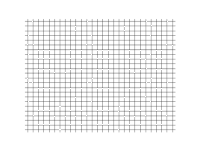
Photo from wikipedia
Abstract As part of the TIPAGE (TIen shan – PAmir GEodynamic program) project, passive seismological observations were made along an approximately N-S profile crossing the Pamir seismic zone for about… Click to show full abstract
Abstract As part of the TIPAGE (TIen shan – PAmir GEodynamic program) project, passive seismological observations were made along an approximately N-S profile crossing the Pamir seismic zone for about one year. From these observations guided waves were recognized. These guided waves occur as a single, continuous, secondary, compressional (P) wave phase behind the first P-wave arrivals. An equivalent phase in the shear (S) wavefield is hardly recognizable. Modelling of the phase shows that an approximately 10 km thick low velocity zone (LVZ) between the Moho and about 160 km depth reproduces the guided waves as a single, continuous phase much better than a 15–20 km thick LVZ. Modelling of the arrival times of the guided waves reveals that a model with a P-wave velocity of 6.3 km/s above about 100 km depth, and a velocity of 7.6 km/s between this depth and the deep cluster of earthquakes at about 150 km depth provides the best fit to the observed travel-time data. One plausible way to explain the low velocity of 6.3 km/s is to invoke the presence of melts in the LVZ. Then, taking a velocity of 6.9 km/s for the lower crust being subducted, about 10–13% melt is required to obtain a velocity of about 6.3 km/s in the LVZ between the Moho and about 100 km depth. This would be in keeping with the estimated burial depths from xenoliths of Gondwana terrane affinity brought to the surface in the southeastern Pamir around 11 million yr. ago. The present-day LVZ is interpreted to comprise continental lower crust. Although guided waves are known to exist associated with subducted oceanic crust or fault zones, this is the first time to the knowledge of the authors that guided waves have been observed resulting from a LVZ associated with subducted continental lower crust.
Journal Title: Tectonophysics
Year Published: 2019
Link to full text (if available)
Share on Social Media: Sign Up to like & get
recommendations!